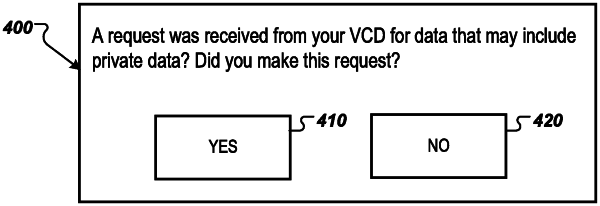| CPC G06F 21/32 (2013.01) [G06F 16/2455 (2019.01); G10L 15/30 (2013.01); G10L 17/22 (2013.01); G10L 2015/223 (2013.01)] | 20 Claims |

|
1. A system, comprising:
a memory device storing a plurality of processor-executable instructions; and
one or more processors configured to execute the plurality of processor-executable instructions, wherein executing the plurality of processor-executable instructions causes the one or more processors to:
receive, from a first device, a request for data associated with a particular user;
determine that the requested data is private data;
based on determining that the requested data is private data, identify a second device that is associated with the particular user;
output a notification to the identified second device based on identifying that the requested data is private data, wherein the notification includes an indication that the private data is being requested via the first device;
receive, from the second device, a response to the notification confirming whether the private data should be sent to the second device;
provide the private data to the second device, in lieu of to the first device from which the request for data was received, when the response indicates that the private data should be sent to the second device; and
forgo providing the private data to the first device and to the second device when the response indicates that the private data should not be sent to the second device.
|